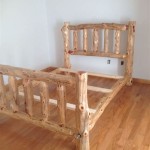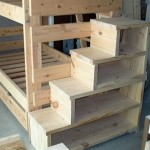Can You Put a Raised Bed on a Slope?
Gardening on a slope can present unique challenges, but it also offers exciting opportunities for creating dynamic and visually appealing landscapes. Raised beds offer a versatile solution for cultivating plants on sloping terrain, providing better control over soil quality, drainage, and accessibility. However, careful planning and execution are crucial for successful implementation.
Assessing the Slope
Before embarking on a raised bed project on a slope, a thorough assessment is essential. The steepness of the slope dictates the necessary preparations and construction techniques. A gentle slope might require minimal adjustments, while a steeper incline necessitates more extensive terracing or retaining wall construction. Measuring the slope's angle helps determine the appropriate approach. This can be achieved using a simple level and measuring tape or a dedicated slope-measuring tool. Understanding the degree of the slope is paramount for ensuring the stability and longevity of the raised bed.
The direction of the slope also plays a significant role. South-facing slopes receive more sunlight and tend to be drier, while north-facing slopes receive less sun and retain more moisture. These factors influence plant selection and watering requirements. Additionally, prevailing winds should be considered, as they can affect soil moisture and plant growth on exposed slopes.
Preparing the Site
Proper site preparation is essential for the success of a raised bed on a slope. This involves clearing the area of vegetation, rocks, and debris. Depending on the slope's steepness, some excavation might be required. For gentler slopes, simply leveling the area where the raised bed will sit might suffice. However, steeper slopes necessitate more extensive groundwork.
Terracing involves creating level platforms on the slope by cutting into the hill and building retaining walls. This creates stable areas for placing raised beds, preventing soil erosion and ensuring proper drainage. Retaining walls, constructed from materials like wood, stone, or concrete blocks, provide support for the soil and the raised bed structure. The height and strength of the retaining wall depend on the slope's steepness and the height of the raised bed.
Constructing the Raised Bed
Once the site is prepared, constructing the raised bed is the next step. The choice of material for the raised bed structure depends on personal preference, budget, and the overall aesthetic of the landscape. Common materials include wood, concrete blocks, or metal. Wood offers a natural look and is relatively easy to work with, while concrete blocks provide durability and longevity. Metal offers a modern aesthetic and can be easily customized.
For sloped terrain, ensuring the stability of the raised bed is crucial. This can be achieved by anchoring the structure to the ground or the retaining wall. Using longer stakes or posts driven deep into the ground can provide added stability. On steeper slopes, incorporating cross bracing or additional supports within the raised bed structure can further enhance its stability.
Filling and Planting
After the raised bed structure is in place, filling it with appropriate soil is essential for plant growth. A mix of topsoil, compost, and other organic matter provides a nutrient-rich environment for plants to thrive. The soil should be well-draining to prevent waterlogging, especially on slopes where runoff can be an issue.
Choosing plants suitable for the specific slope conditions is critical. Consider the slope's orientation, sun exposure, and soil moisture when selecting plants. Drought-tolerant plants are ideal for south-facing slopes, while moisture-loving plants are better suited for north-facing slopes. Planting on a slope also provides an opportunity to create visual interest by using plants of varying heights and textures.
Maintaining the Raised Bed
Maintaining the raised bed on a slope requires regular attention. Watering, fertilizing, and weeding are essential for healthy plant growth. Monitoring the soil moisture is crucial, as slopes can dry out quickly, especially in sunny areas. Mulching can help retain moisture, suppress weeds, and regulate soil temperature.
Regular inspection of the raised bed structure and retaining walls is also crucial. Check for any signs of damage or erosion and make necessary repairs promptly. Proper maintenance ensures the longevity of the raised bed and the health of the plants.

How To Build An Organic Raised Bed On A Sloped Yard Deeply Southern Home

How To Build An Organic Raised Bed On A Sloped Yard Deeply Southern Home

Raised Bed Vegetable Garden On A Slope Gardening Healthy Alyona

How To Make Raised Garden Bed In Slope Area Step By Idea For Beginners Gardening Nitha Kitchen

Can You Grow A Raised Bed Garden On Slope Gardening Channel

Raised Bed Vegetable Garden On A Slope Gardening Healthy Alyona

How To Build Raised Garden Beds On A Slope

Raised Bed Vegetable Garden On A Slope Gardening Healthy Alyona

How To Build An Organic Raised Bed On A Sloped Yard Deeply Southern Home

How To Build An Organic Raised Bed On A Sloped Yard Deeply Southern Home







